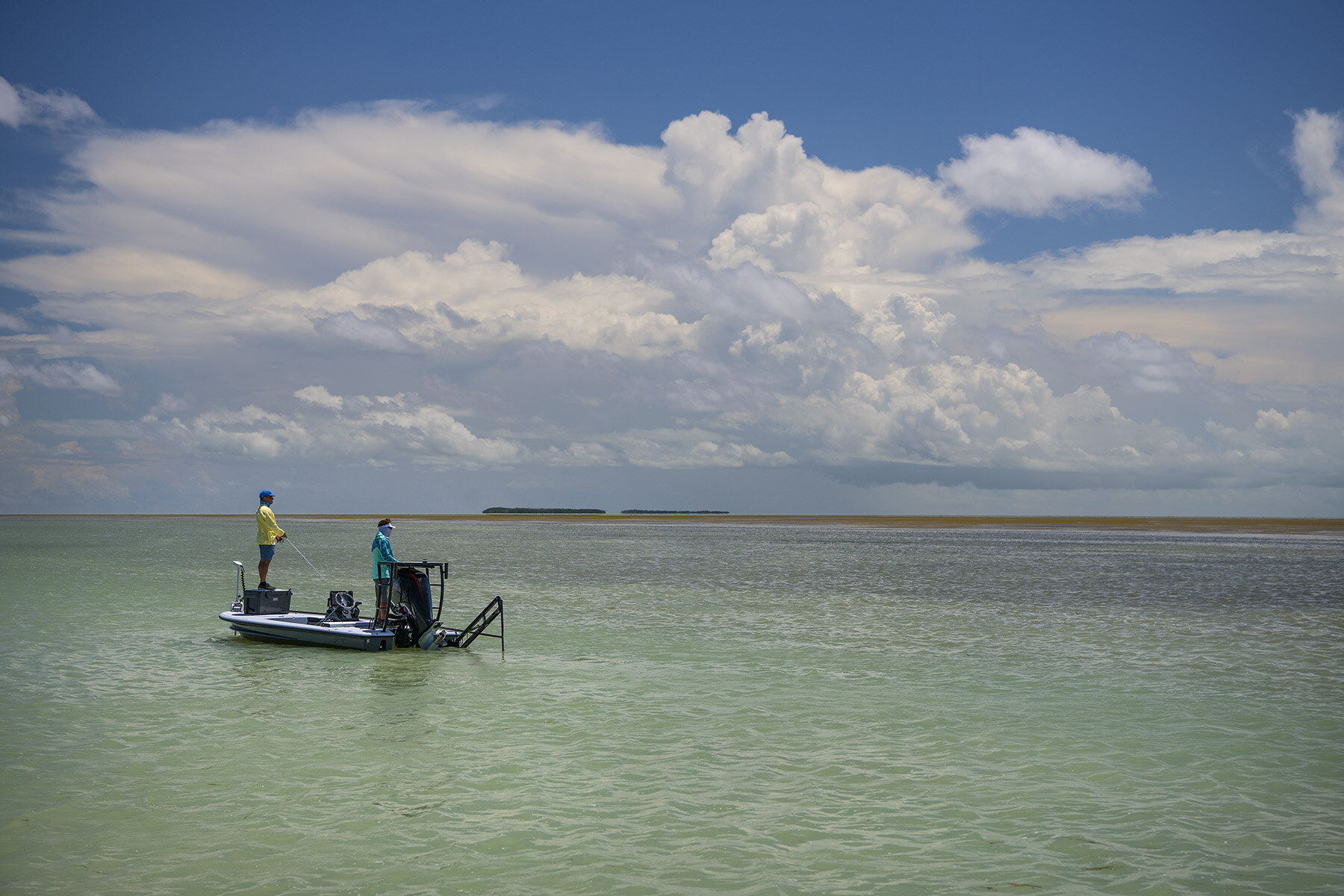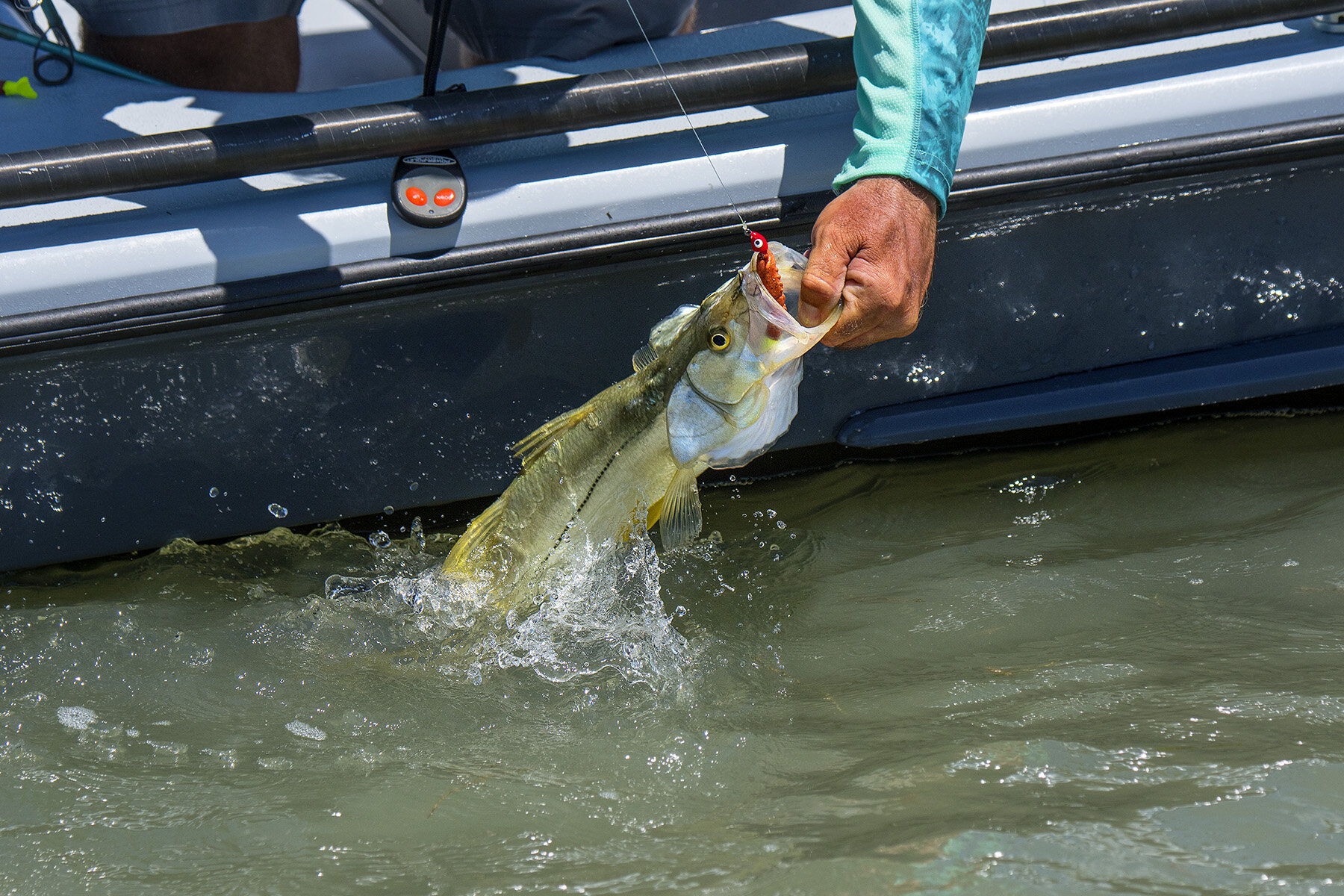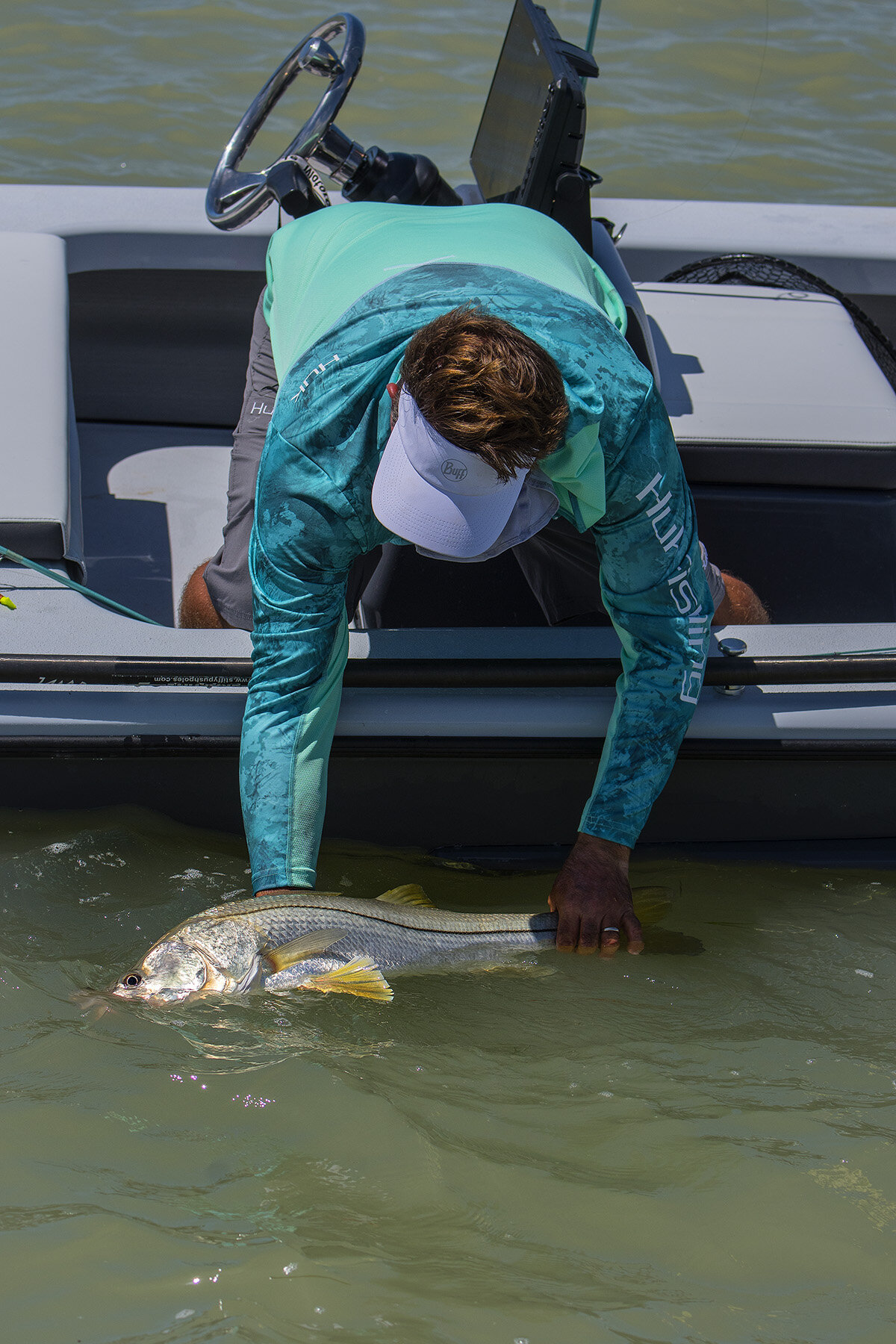2 Tricks for Fishing the Everglades and How to Help Keep Them Healthy
written by Evan Anderson
The Florida Everglades make up one of the most well-known and treasured American National Parks. They are also being “strangled” by water issues. Since the damming of the Kissimmee River, the Everglades’ primary source of freshwater, this beautiful fishery has seen “endangered wildlife populations, declining water quality, water mismanagement, [and] extensive urban and agricultural development,” according to Captains For Clean Water, a conservation organization dedicated to restoring the health and natural beauty of the Everglades.
However, there is hope on the horizon. In this episode of Saltwater Experience, Captains Tom Rowland and Rich Tudor, both of them members of Captains for Clean Water, head into the Everglades to observe and fish the rising population of snook in the southern tip of the waterway, a place called Flamingo. As they fish, the two captains observe and comment on some of the improvements to the ecosystem made possible by CFCW, while also giving a few tips for catching some of the more prominent species in the Everglades.
SE Multimedia | 2020
WHERE TO SET UP
As the two captains push off into the Everglades in their Yellowfin 17 skiff, Tudor remarks, “There’s been a lot of reds and snook up on the shallow edges. It’ll be fun to not be limited by our draft.” Tudor’s plan for the day is to start off hugging the mangrove shorelines while they wait for the tide to drop. “That’s typically what I like to do,” he says, “high tide: up against the mangrove shorelines, low tide: out on the edges of the flats.”
“That’s typically what I like to do [in the Everglades]. High tide: up against the mangrove shorelines, low tide: out on the edges of the flats.”
Maneuvering through the waterways, the captains are delighted by all the signs of wildlife and, most importantly, all the fresh seagrass beneath the surface. “We had a big seagrass die-off,” explains Rowland, “everybody was incredibly worried about it. I have an optimistic attitude about it because here we are a year later, there’s been a few small things that have changed and the result is obvious regrowth of seagrass.” The efforts of conservation groups like CFCW have begun to pay off.
SE Multimedia | 2020
After fishing against the mangroves for a couple hours, the duo relocates to the flats now that the water level has begun to drop. Seeing birds swooping in the distance, Rowland looks through his Nikon binoculars to discover some mullet splashing on the edge of the flat. Rowland says to Tudor, “We need to cast where we see the mullet because that’s where the fish are going to be.”
The Yellowfin Skiff with a Mercury 115 hp engine allows them to navigate easily through the flats with its shallow draft. The Yellowfin 17 combined with the Mercury Pro XS 115 that weighs in at 359 pounds is the ultimate combination of high performance, fuel efficiency and shallow draft. In no time at all they’re right where they need to be, a big channel that dumps out between two flats, and they begin casting toward the surfacing mullet, leading to a plentiful snook catch. “Very very healthy looking fish,” remarks Rowland as he reels in a particularly beautiful snook, “I think the Florida Bay and this whole area is on its way to a major recovery.”
After working one edge of the flats and catching some impressive snook, Tudor steers the Yellowfin to the other side of the channel to fish the edge of the newly exposed flats. “We started casting at the side of that channel and right away BOOM! Redfish on,” says Rowland. With the return of the seagrass this past year, the redfish and snook populations have seen a massive spike, resulting in incredible fishing, as Tudor puts it.
RIGGING FOR THE EVERGLADES
Rowland and Tudor have a specific way of rigging their tackle for the Everglades. Rowland describes it as “a St Croix 7’ 8-17lb Avid rod with 10-20lb Daiwa Jbraid line and a nice 4,000 size Daiwa Certate reel. We’re throwing that out there with a ¼ oz. (or even a ½ oz.) jig head with a Gulp shrimp. Sometimes we use a live shrimp, they’re not as available this time of year so the Gulp shrimp works well. A jerkbait will work just as well.” Rowland advises a slow presentation across the bottom with this setup. “Especially in areas where you’re seeing some kind of a run-out or an area where there’s a pothole, that’s where these fish are going to sit and try to ambush some of these mullet as they’re coming by.”
SE Multimedia | 2020
As the day comes to a close and they reflect back on it at the Hawk’s Cay Resort, the thing they appreciated the most was the health of the ecosystem. “That was the overall theme of the day,” says Rowland, “You’re looking around and you’re seeing grass where there was none and you’re seeing clear water where there was none...It’s as healthy as I’ve seen it in a long time. I’m thankful for individuals and groups like Captains for Clean Water who keep the health of the Everglades as their top priority.”
“I’m thankful for individuals and groups like ‘Captains for Clean Water’ who keep the health of the Everglades as their top priority.”
If you want to help in the fight to restore the health of the Everglades, visit https://captainsforcleanwater.org/. “Captains for Clean Water has maintained this very positive outlook on this situation,” says Rowland, “Yes it was a very dire situation for the water, but there is a plan in place, and with bringing enough awareness around this we can make some serious changes.” He finishes, saying, “I’ve got a lot of confidence that if we do make some changes with getting the water flowing south, then we’re likely to see some of the best fishing we’ve ever seen in our lifetime.”
Check out the full episode below and witness the impressive recovery of this beautiful fishery on S15:E3 of Saltwater Experience. Can’t get enough Saltwater Experience content? Then follow @saltwater_experience, @tom_rowland, @rich_tudor1 and @waypointtv on Instagram. You can also subscribe to The Tom Rowland Podcast for great content each week.
















